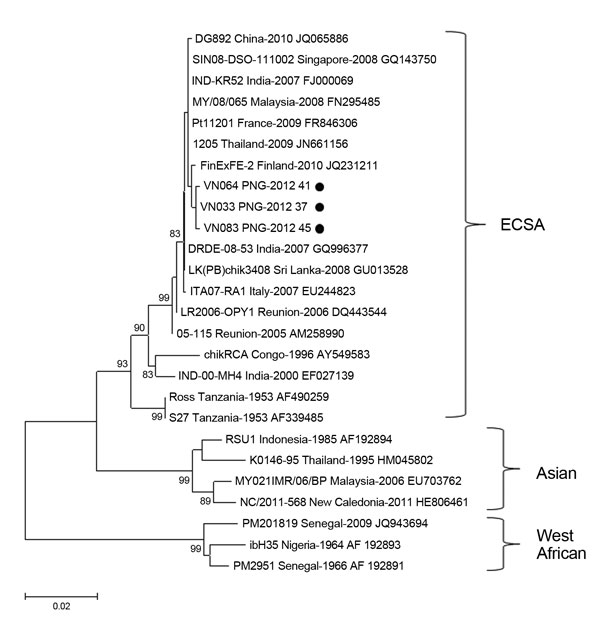Volume 19, Number 9—September 2013
Dispatch
Outbreak of Chikungunya Virus Infection, Vanimo, Papua New Guinea
Figure 1

Figure 1. . Phylogenetic analysis of a 924-nt fragment of partial envelope 1 glycoprotein gene sequences of chikungunya virus strains isolated in Vanino, Papua New Guinea (PNG) and global strains. The tree was constructed by using bootstrap analysis (1,000 replicates) and the neighbor-joining method with the Kimura 2-parameter method for nucleotide data analysis. Values along branches are bootstrap percentages. Black circles indicate strains isolated in this study. ECSA, Eastern/Central/Southern African. Scale bar indicates nucleotide substitutions per site.
Page created: August 20, 2013
Page updated: August 20, 2013
Page reviewed: August 20, 2013
The conclusions, findings, and opinions expressed by authors contributing to this journal do not necessarily reflect the official position of the U.S. Department of Health and Human Services, the Public Health Service, the Centers for Disease Control and Prevention, or the authors' affiliated institutions. Use of trade names is for identification only and does not imply endorsement by any of the groups named above.